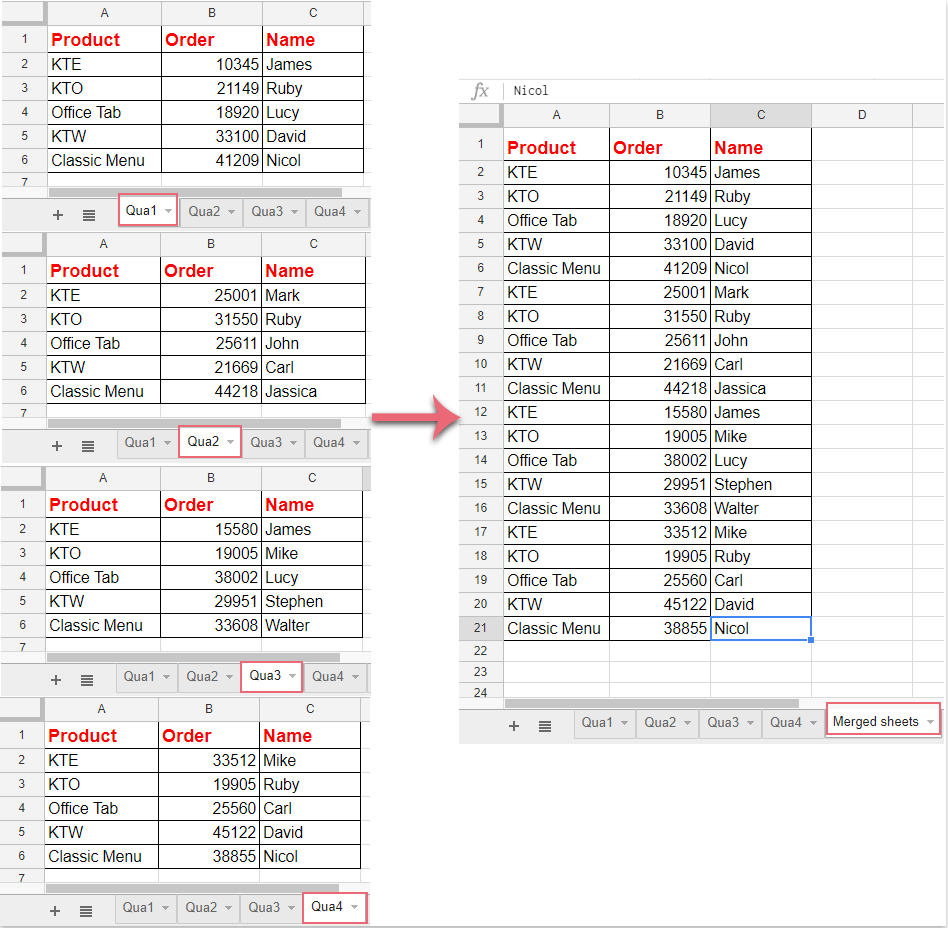Combine Multiple Excel Sheets: Easy Merging Techniques

Merging multiple Excel sheets into a single workbook is a common requirement in many business scenarios, especially when dealing with data from various sources, departments, or time periods. Here’s how you can combine Excel sheets efficiently, ensuring data integrity and enhancing productivity:
Understanding the Need for Merging Excel Sheets


Excel sheets often hold valuable data sets that need to be brought together for comprehensive analysis, reporting, or simply for record keeping. Whether you’re compiling weekly sales figures from different regions or gathering project data from various team members, merging these sheets becomes imperative.
Preparation Before Merging

- Ensure Consistency: Before you merge, ensure that all sheets have similar column headers or structure. Mismatched headers can complicate the merging process.
- Backup Data: Always back up your data. While Excel merging techniques are generally safe, mistakes can happen.
- Clean Data: Remove duplicates, blanks, and format cells consistently where possible to prevent errors during the merge.
Methods to Combine Excel Sheets

1. Manual Copy and Paste
For small datasets or when you’re starting out, a manual approach can suffice:
- Open both Excel workbooks: the one containing the sheets to merge and the destination workbook.
- Right-click on the sheet tab you want to copy from the source workbook, then select Move or Copy.
- In the dialog box, choose the destination workbook and decide if you want to create a copy. Ensure you check the Create a copy box if you don’t want to remove the sheet from its original workbook.
- Click OK to copy the sheet into the destination workbook.
2. Using Excel’s Built-in Features
Excel provides several tools to streamline the process:
- Power Query:
- Open Excel and go to the Data tab, click Get Data, then From File, and select From Workbook.
- Choose the workbook containing the sheets you want to merge. Use Combine if you’re looking to consolidate similar tables from different sheets.
- Select the sheets and define how to merge them, like concatenating rows or columns.
- Click on Load to insert the combined data into your current workbook.
- Consolidate Function: This tool is perfect for summarizing data:
- From the Data tab, select Consolidate.
- Choose the function you want to use (SUM, AVERAGE, etc.) and select the range from each sheet that you want to consolidate.
- Choose where to put the consolidated data and click OK.
3. VBA Macros
Automating with VBA can save significant time:
Sub MergeWorksheets() Dim wsSource As Worksheet Dim wsDest As Worksheet Dim iRow As Long' Define sheets to merge Set wsDest = ThisWorkbook.Sheets("Sheet1") For Each wsSource In ThisWorkbook.Sheets If wsSource.Name <> wsDest.Name Then wsSource.UsedRange.Copy iRow = wsDest.Cells(wsDest.Rows.Count, 1).End(xlUp).Row + 1 wsDest.Cells(iRow, 1).PasteSpecial xlPasteValues End If Next wsSource Application.CutCopyMode = False
End Sub
This macro assumes all data is in the first column and that the sheets you want to merge are in the same workbook.
⚠️ Note: Be cautious when using VBA macros as they can alter your data permanently. Ensure you understand the script before running it.
Dealing with Different Data Structures

When sheets have different data structures, merging becomes trickier:
- Adjust and Align: Sometimes, you might need to manually align data structures or use helper columns to match data.
- Power Query Transformations: Use transformations in Power Query to align data from different sheets before merging.
Conclusion

In conclusion, merging Excel sheets can be done through various methods, each suited for different scenarios. Manual methods offer control but can be time-consuming, while automated techniques like Power Query and VBA can handle large datasets with relative ease. Understanding your data’s structure, the volume, and your merging needs are crucial for choosing the right method. With the right approach, merging sheets not only saves time but also ensures data accuracy and provides valuable insights from consolidated information.
What is the quickest way to merge Excel sheets?

+
The quickest method for merging Excel sheets often involves using Excel’s built-in tools like Power Query, which can automate the process once set up, or VBA macros for very specific merging needs.
Can you merge sheets from different workbooks?

+
Yes, you can merge sheets from different workbooks. Power Query can import from multiple workbooks, or you can use external data connections to fetch data from one Excel file into another.
How do you handle headers when merging Excel sheets?

+
If headers differ between sheets, you might need to use Power Query to align them or manually modify the destination workbook to match headers before merging. For identical headers, automatic methods like consolidation or copy-paste can work directly.
What if there are duplicate entries after merging?

+
To handle duplicates, you could:
- Use Excel’s remove duplicate feature.
- Implement Power Query transformations to filter or aggregate duplicates.
- Or use VBA to conditionally merge data, preventing or managing duplicates as needed.